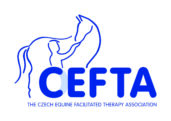The therapist conducts manual correction based on knowledge of developmental kinesiology and his/her own clinical experience. Specifics of manual corrections of the chosen positions are described in our new text book – comprehensive methodology. General principles of manual correction Manual correction is most commonly done for ball-and-socket joints and by influencing the positioning of the...
The therapist must be able to assess the quality of the position of the client in the chosen therapy position. If such quality is lacking, the therapist must know how to correct this. He/she uses the following techniques to correct position: verbal correction; the use of positioning aids; manual correction. If the client is able...
The sitting position This position is intended for children that are able to sit on their own, children beginning with bipedal locomotion or fully verticalized children. The sitting position is the most demanding on the child’s postural system and offers direct stimulation of bipedal locomotion without the pathological pattern of the legs. This occurs when...
Assisted kneeling and sitting position The assisted kneeling and sitting position provides the opportunity to set the hip joints to exterior rotation and abduction, allows for direct influence on the pelvis as a result of the movement of the horse’s back and thus education/re-eduction of muscle coordination of the trunk, whilst excluding the legs. In this...
The backward sitting position The backward sitting position draws on the aim to seat the client on the ischial tuberosity, adopting a neutral pelvis position, centred shoulder and hip joints and support provided by the palms facing the rear of the horse. This position requires precision from the therapist, but makes it possible to reduce pathological...
The therapy positions used in hippotherapy and the terminology used for these have been applied in practice for several years, drawing on Czech and foreign literature and practical experience. The therapist uses the horse’s back as a balance area, which he/she can use to achieve the targeted therapeutic effect. The positions of the client on the...
A rhythmic and regular horse walk is the foundation for creating of maximum stereotypical effect to a client in order to cause, train and create a reaction program – within the motor learning. During a therapeutic session, a well-chosen and prepared horse carries a client on its relaxed back and it influences client´s body by its spine movement impulses. These...
This week we are enjoying snow, ski… so next blog will be published on Wednesday 2nd March 2016.
The result of a child´s proper hippotherapy initial evaluation is defining short and long-term treatment goals that lead to the maximum therapy effect. It is necessary, that the therapist is able to combine competently below listed hippotherapy techniques in a ratio to fulfil the treatment goals. Otherwise, hippotherapy treatment may result in a negative pathological therapy impact, which...
The possibility of positively addressing the limbic system during hippotherapy treatment session definitely belongs to the most important effect. It is well-known that the limbic system is responsible for controlling various functions in the body. Some of these functions include interpreting emotional responses, storing memories, and regulating hormones. The limbic system is also involved with...
